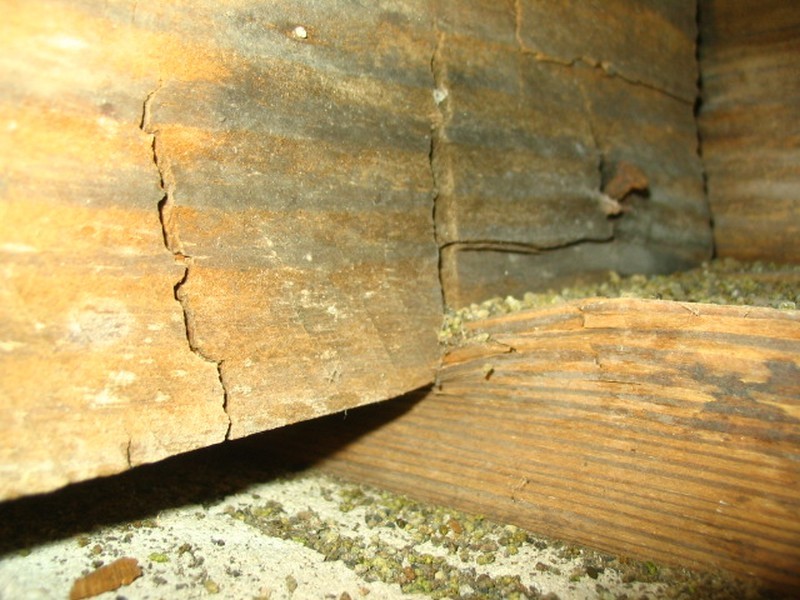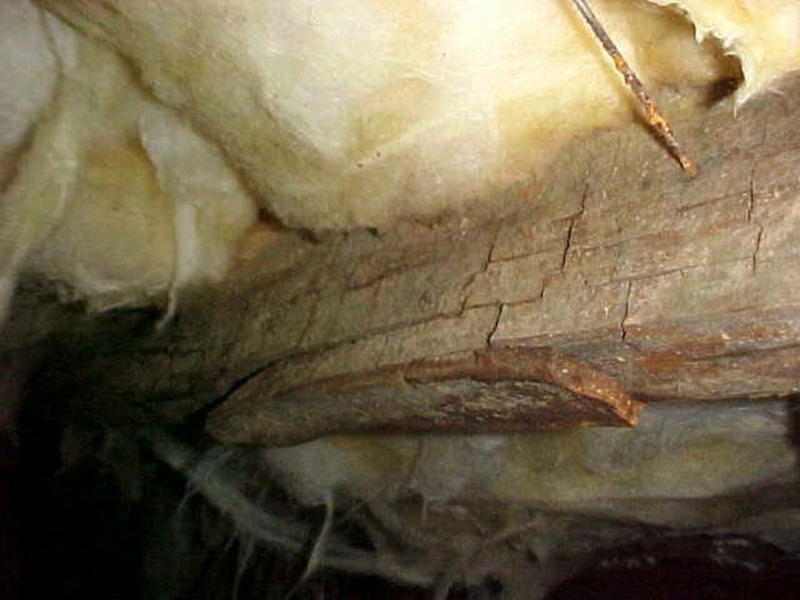The component Structure – Other is where we report Wood Destroying Insects and Organisms (WDI and WDO). We use this section because the evidence and damage can occur across several different structural components. WDI includes termites, powder post beetles, old house borers, carpenter ants, and carpenter bees. WDO brings wood destroying fungus into the picture. We will not address carpenter bees here because their activity and damage is rarely structural.
It is essential that you report WDI/WDO using language that clearly states that the extent of any activity or damage cannot be determined. Defect statements for WDI specifically do not “name the insect.” This is not necessary, and may be restricted by regulations to licensed specialists. Any signs of chronic excess moisture in a crawl space requires that you inspect and probe carefully for damage, as well as reporting the moisture conditions in the “Insulation and Ventilation / Humidity Control” section.
Termites, at least the ones we are concerned with, eat wood. They are responsible for billions of dollars in damage to US homes every year. We can broadly separate termites into 2 types: subterranean and drywood.
Subterranean termites can be found throughout the country. Their activity can often be identified by the mud “shelter tubes” between the ground and their food supply, i.e. the wooden parts of the house. These shelter tubes can be identified across a crawlspace. You can also often see the dirt of the tubes at the foundation sill plate, between framing members, and in damaged wood. Additionally, you may see discarded pairs of equal-sized wings on window sills from “swarmers.” This occurs when a colony expands, but doesn’t absolutely mean there’s an infestation in the home.
Drywood termites, found in the southern and south coastal states, don’t require shelter tubes. It’s not unusual for them to completely destroy a framing member without any outward signs. Probing is always required during an inspection. The feces, or pellets, from drywood termites is distinctive and may be the only visible sign. Remember: we do not report wood destroying insects by name.
Subterranean Termites and Shelter Tubes
There is evidence of possible wood-destroying insect activity. The extent of the activity or any damage present is not determined during a home inspection. Hire a pest specialist for further evaluation and required action.
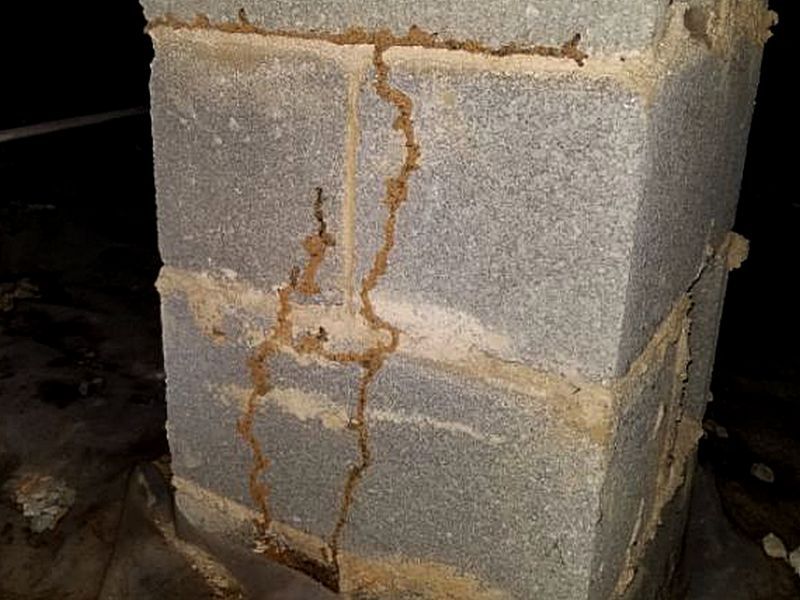
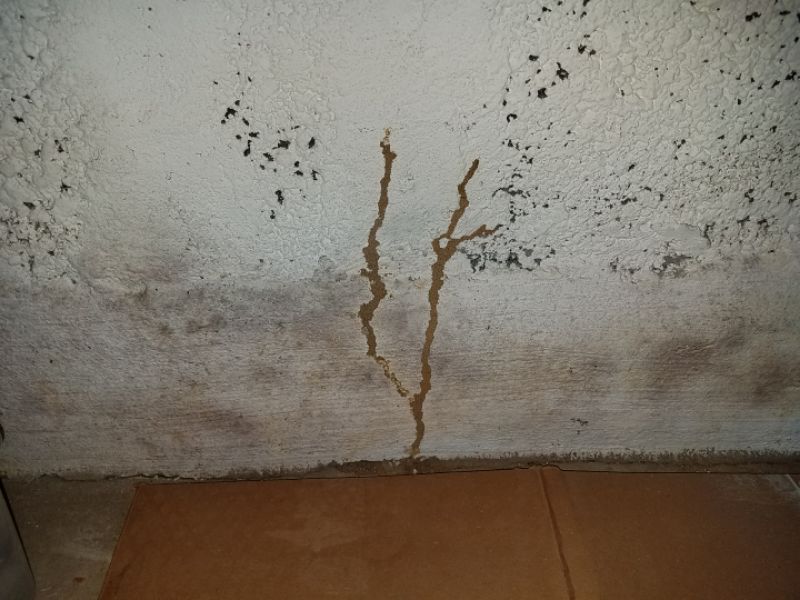
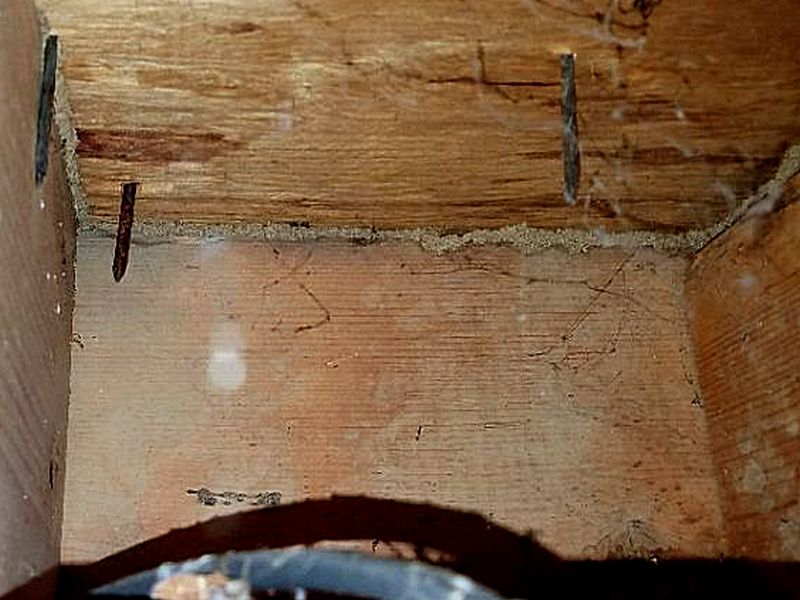
There is evidence of possible wood-destroying insect activity and damage. The extent of the activity or any damage present is not determined during a home inspection. Hire a pest specialist for further evaluation and required action.
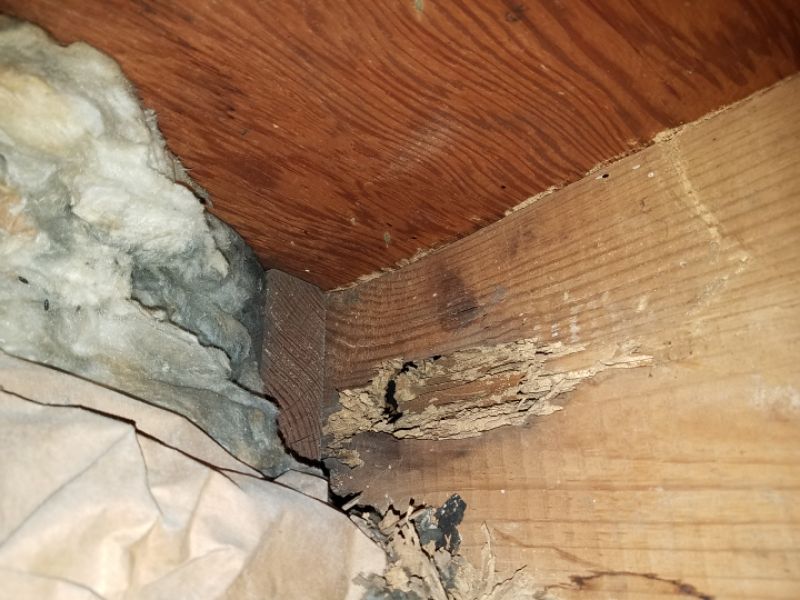
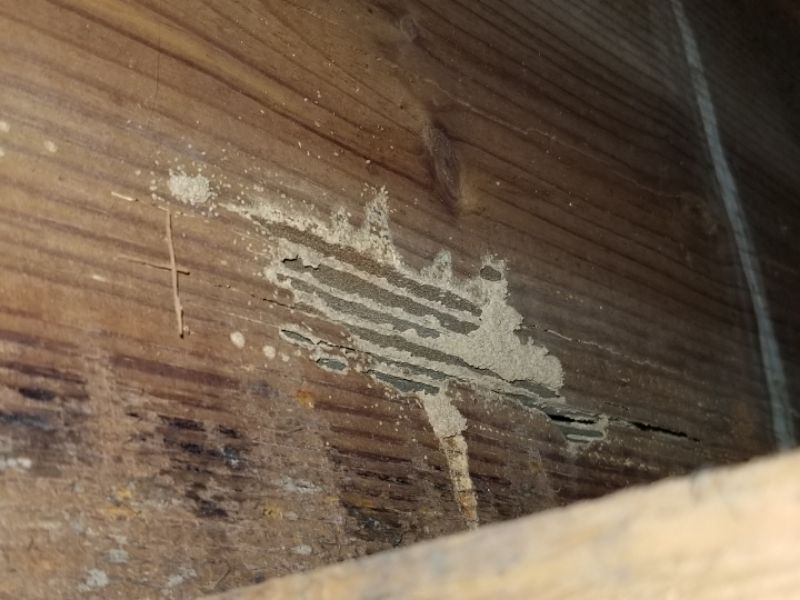
Drywood Termite Pellets
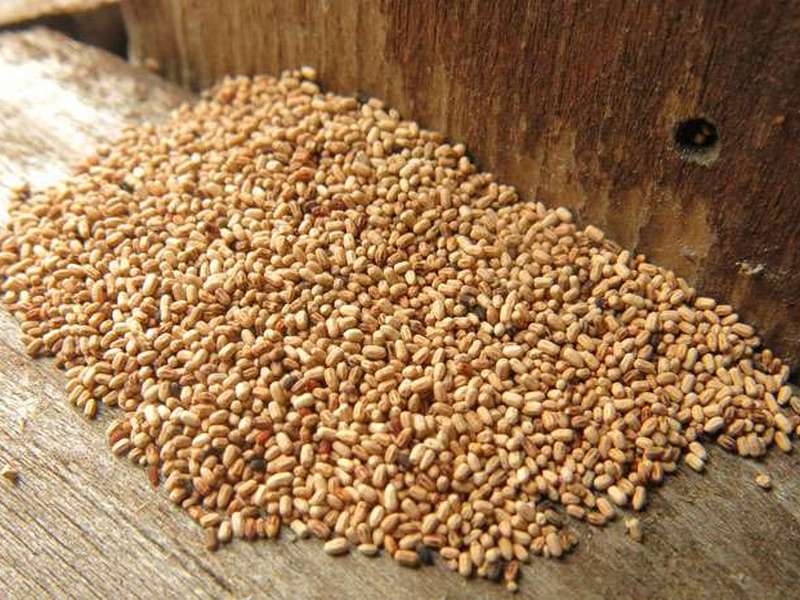
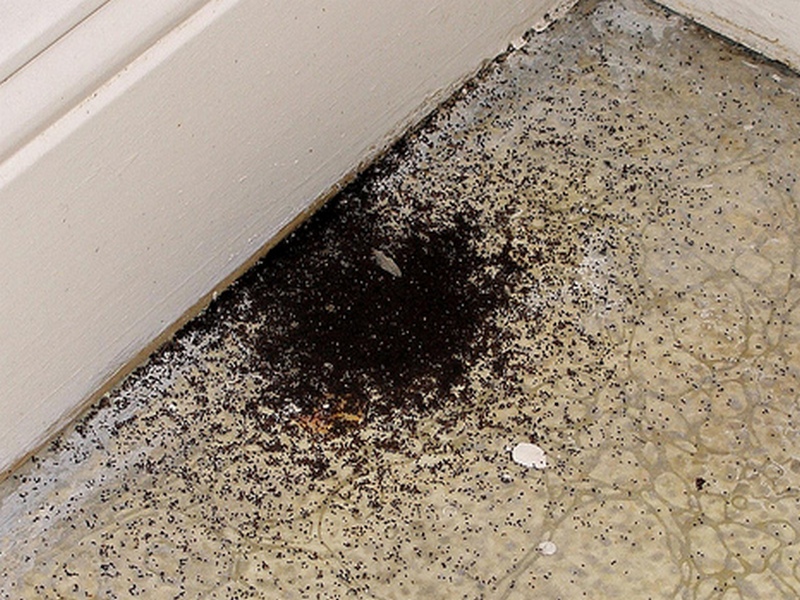
Termite “Swarmers” and Wings
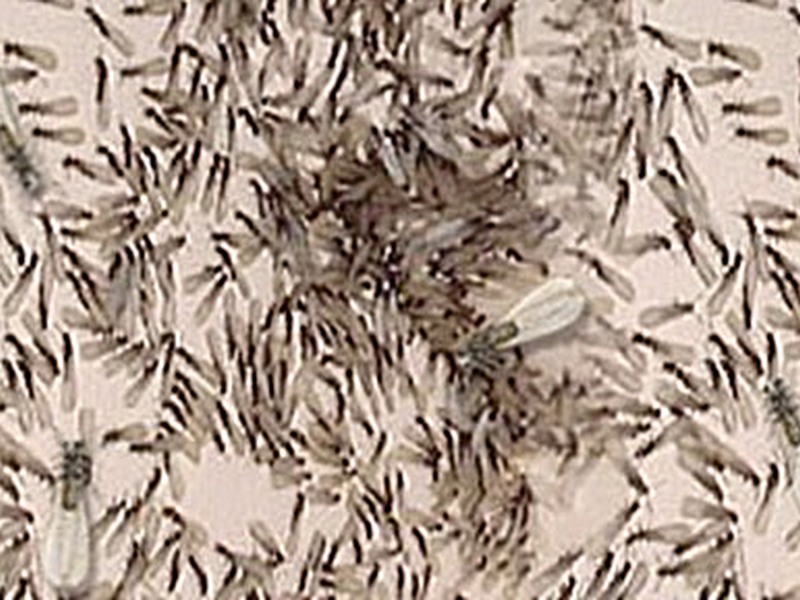
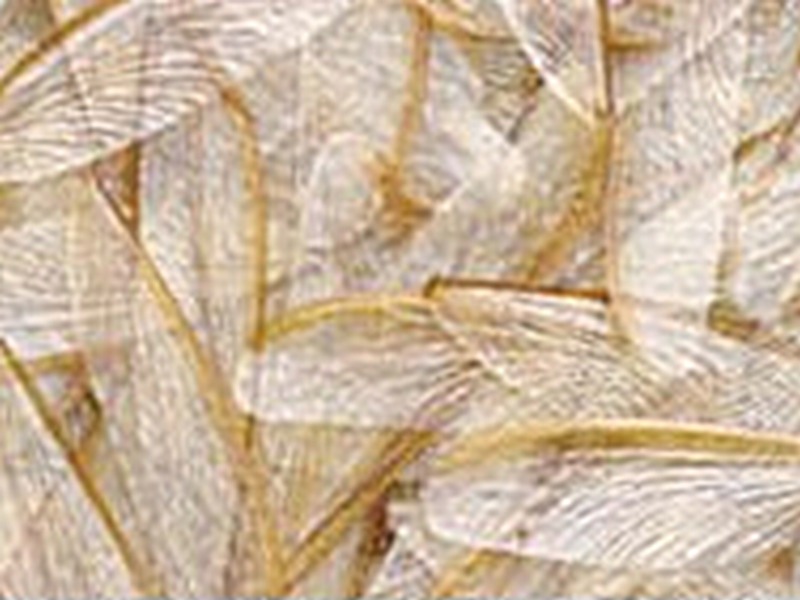
Powder post beetles are second only to termites in WDI damage. There are 3 groups of beetles. Lyctids and Bostrichids primarily infest hardwoods, e.g. flooring, furniture, and paneling. Anobiids also infest softwoods, and are responsible for framing damage. The beetles do their damage unseen within the wood while in the larval stage. The small exit holes they create when emerging as adults is the main telltale sign. The other is the fine flour-like wood powder, or frass, that comes out of the holes.
A joist damaged by powder post beetles can sometimes be pulled apart by hand. That’s the bad news. The good news is that the kiln drying treatment for modern dimensional lumber will kill the beetles. While poor storage can allow a reinfestation, generally speaking newer homes don’t have structural damage from Anobiid beetles. The easiest key for identification is to remember “PP” for Powder Post beetles; the exit holes are “Pin Point”, about as big as a pencil lead. Always probe suspected areas! You can also look for the frass. New frass will be bright in color, while old activity frass will have darkened. Remember: we do not report wood destroying insects by name.
There is evidence of possible wood-destroying insect activity. The extent of the activity or any damage present is not determined during a home inspection. Hire a pest specialist for further evaluation and required action.
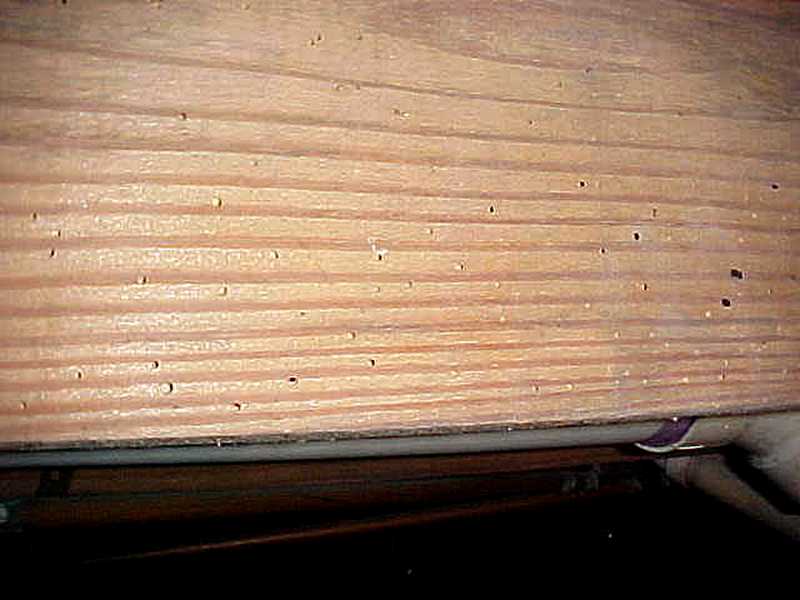
There is evidence of possible wood-destroying insect activity and damage. The extent of the activity or any damage present is not determined during a home inspection. Hire a pest specialist for further evaluation and required action.
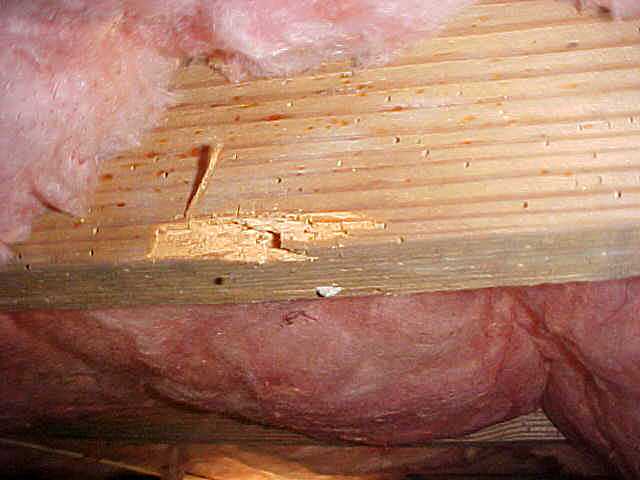
Contrary to their name, “Old House Borers” are beetles that are more likely to be found in newer homes. This is because they generally attack softwoods, e.g. pine, spruce, during the storage stage. Higher humidity is a conducive condition. In some southern states old house borer damage is as serious as that of powder post beetles and even termites. Any individual framing member, even in an attic, can be affected.
These larger beetles are usually only detected by their exit holes as they emerge from the wood. For identification purposes, remember “OH“: Old House borers make Oval Holes when they exit. These holes are about 1/4″ across. It is also possible that you can actually hear the larvae feeding inside the wood. They make a clicking or rasping sound. Always probe any area where exit holes are noted. Remember: we do not report wood destroying insects by name.
There is evidence of possible wood-destroying insect activity. The extent of the activity or any damage present is not determined during a home inspection. Hire a pest specialist for further evaluation and required action.
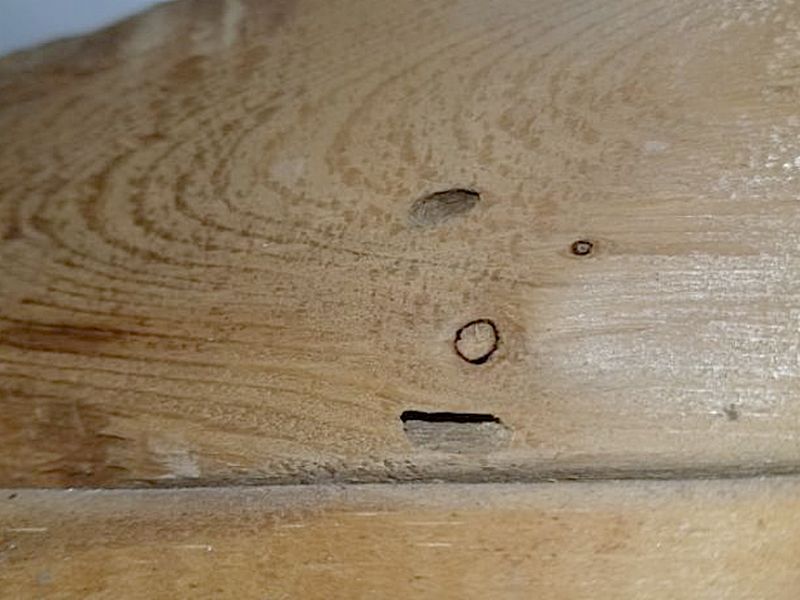
There is evidence of possible wood-destroying insect activity and damage. The extent of the activity or any damage present is not determined during a home inspection. Hire a pest specialist for further evaluation and required action.
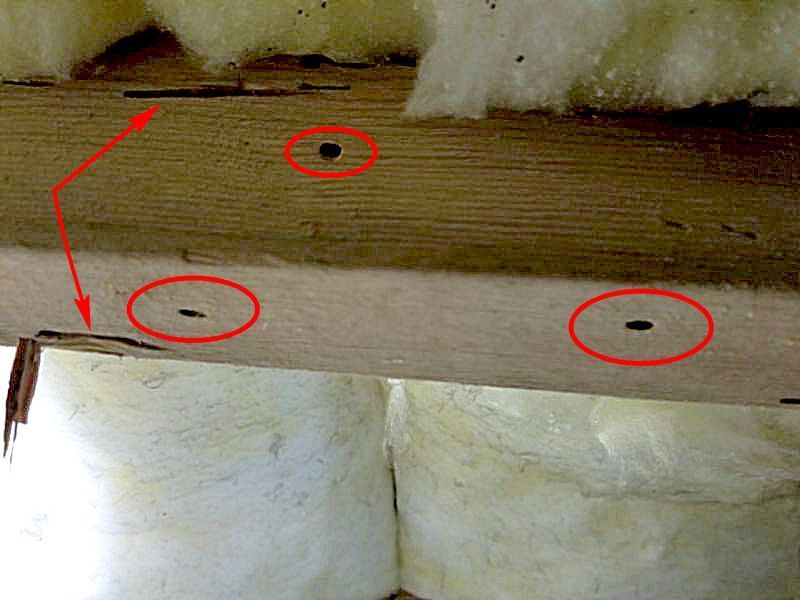
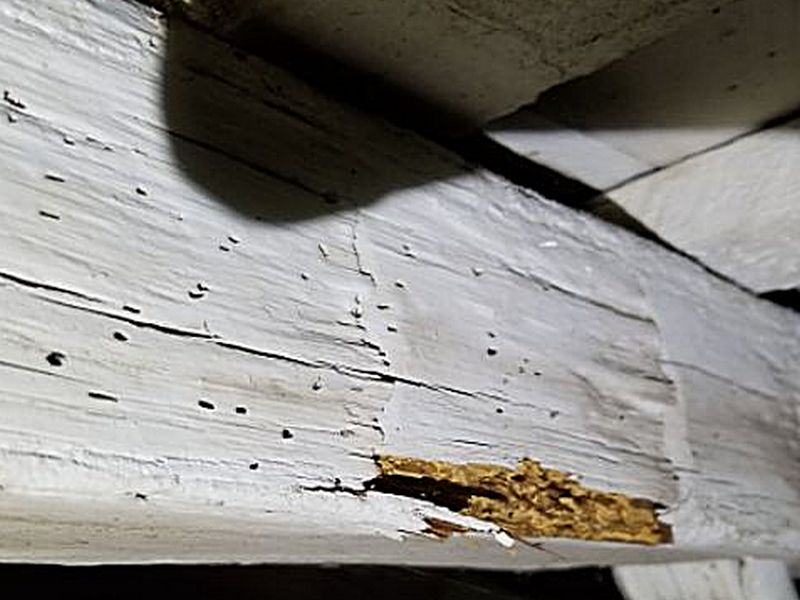
Unlike termites, carpenter ants do not eat wood. They hollow it out, creating galleries in which to raise their young. This can also occur in foam insulation. They are attracted to soft, moist wood, so water intrusion is a primary conducive condition. Inspect carefully in these locations. From the moist area they can move onto sound wood. While structural damage is generally not as great as for termites and beetles, it can be an issue. Nests inside a house are frequently “satellite” nests; the Queen and the main colony will likely be outside in a woodpile or the rotted area of a tree or stump.
Carpenter ants can be black, brown, or red. It’s more common to see a few large ants rather than a lot, unless you disturb a nest. A trail of many small ants inside the home is probably not carpenter ants. During the “swarmer” flight stage, they may leave behind double, unevenly-sized wings. As with termites, this does not absolutely mean there’s an infestation. The ants have bent antennae, a single node between the thorax and abdomen, and hairs on the abdomen. The frass that they kick out from their galleries is coarse and stringy. Always probe around areas of concern. Remember, we do not report wood destroying insects by name.
Identifying Carpenter Ants
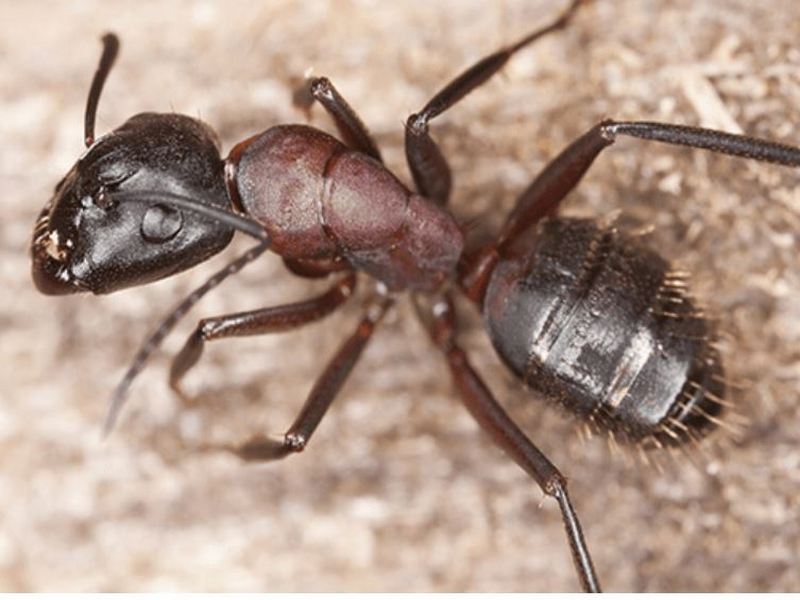
There is evidence of possible wood-destroying insect activity. The extent of the activity or any damage present is not determined during a home inspection. Hire a pest specialist for further evaluation and required action.
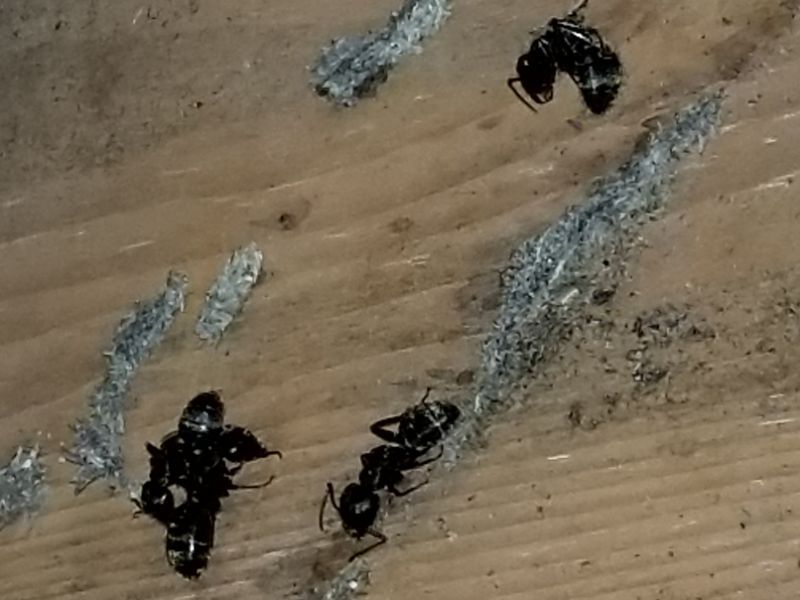
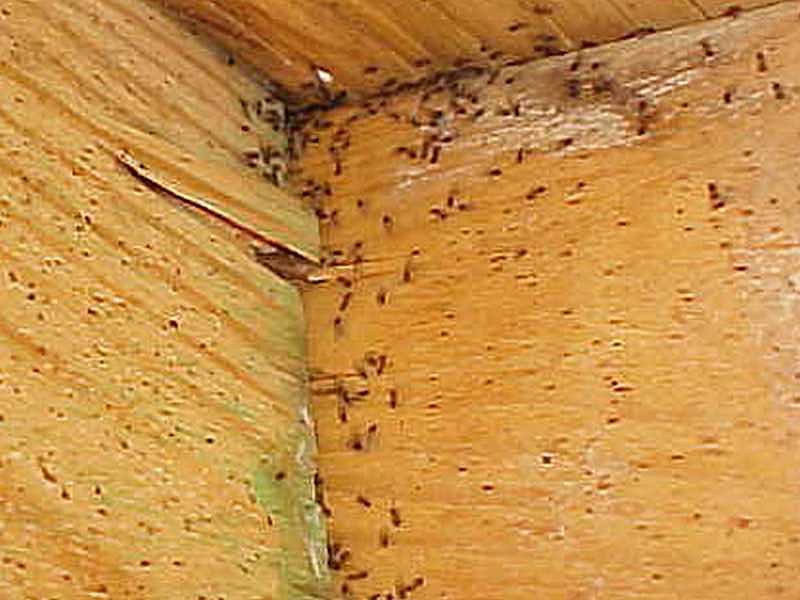
Carpenter Ant Frass: Possible Damage
There is evidence of possible wood-destroying insect activity and damage. The extent of the activity or any damage present is not determined during a home inspection. Hire a pest specialist for further evaluation and required action.
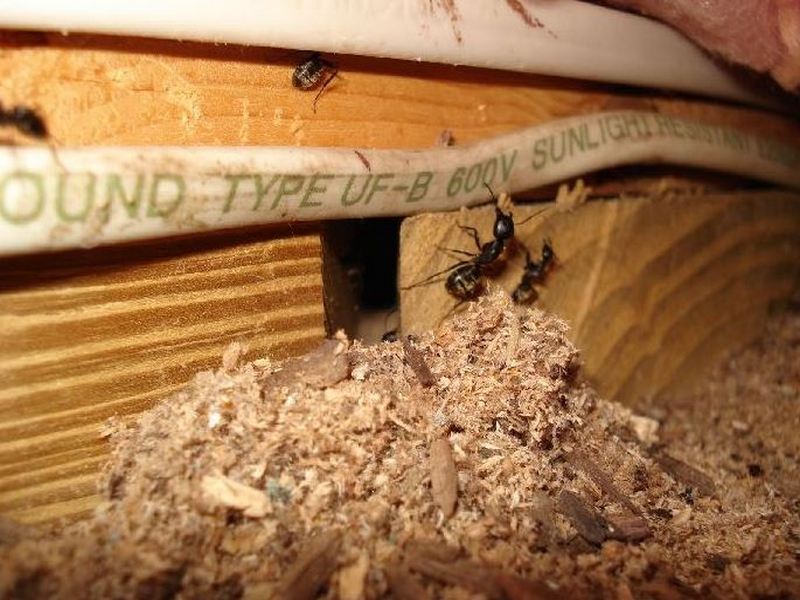
Wood Destroying Fungus requires chronic, elevated moisture levels to thrive. This is why water intrusion into a poorly-managed crawl space is an ideal scenario for significant problems in humid climates. The warm, moist exterior air enters the crawl space, and condenses into liquid on the cooler surfaces such as the framing members. Floor joists can be heavily affected where exposed, but clean where covered by insulation. It is essential that we identify conducive conditions and the early signs, as well as damage.
Fiberglass insulation that is hanging and “stringy”, or damp with condensation, is a warning sign. It must be reported in “Insulation and Ventilation – Humidity Control.” Fungus spreads by spores and thread-like filaments called Hyphae. When staining, spores, or hyphae are visible on the framing, a wood destroying organism must be reported in “Structure – Other.” A “treatment” is not the answer, especially not bleach or Timbor. The underlying conditions must be corrected. Left unchecked, extensive damage will occur. Remember, we always use the word “possible” or “suspected” when reporting molds, mildews, or fungi.
Signs of Conducive Conditions
“Stringy” fiberglass from condensation
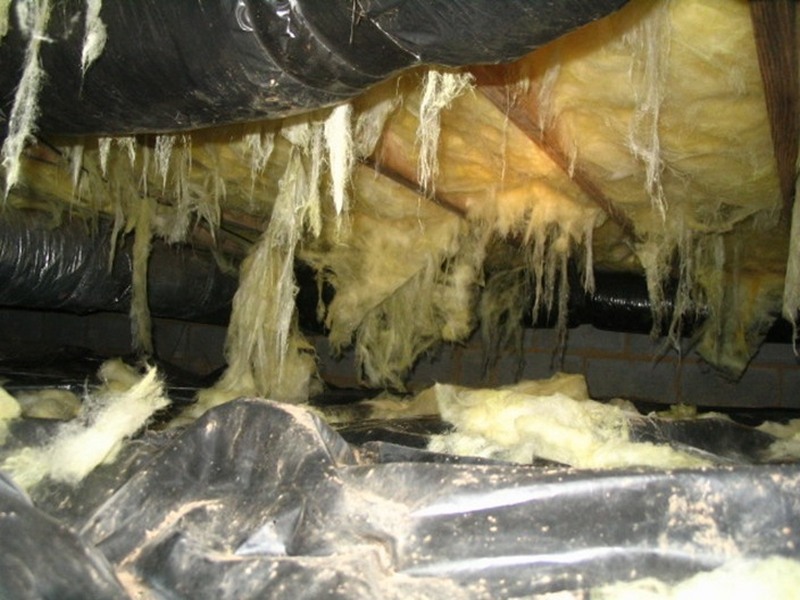
Condensation cannot be ignored
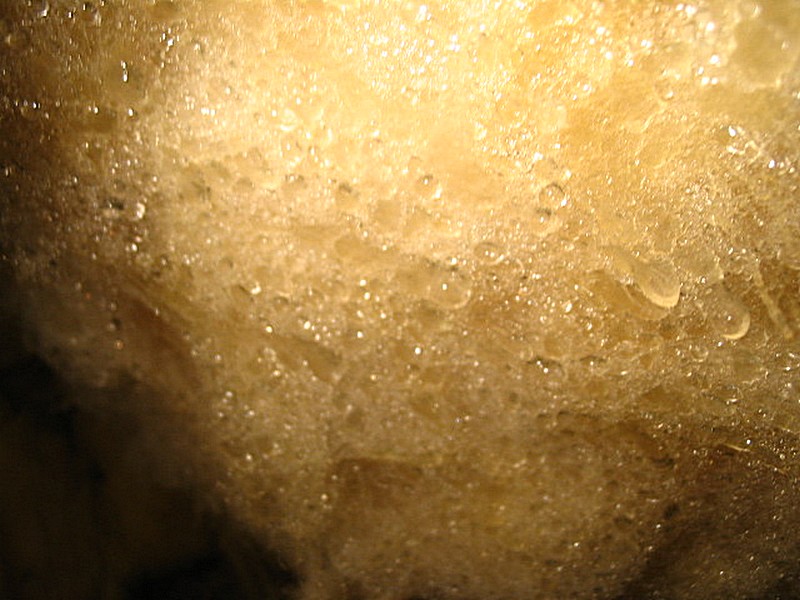
The fiberglass protects the wood from condensation
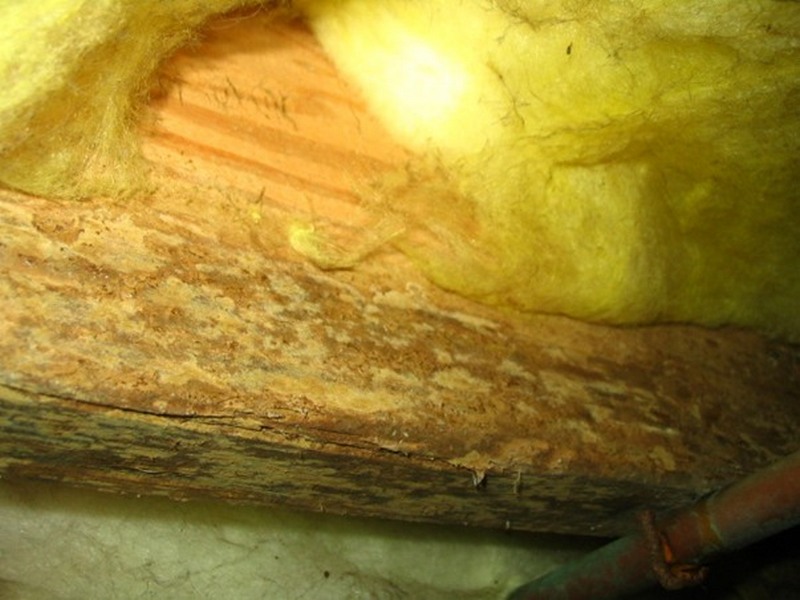
The thread-like filaments are Hyphae
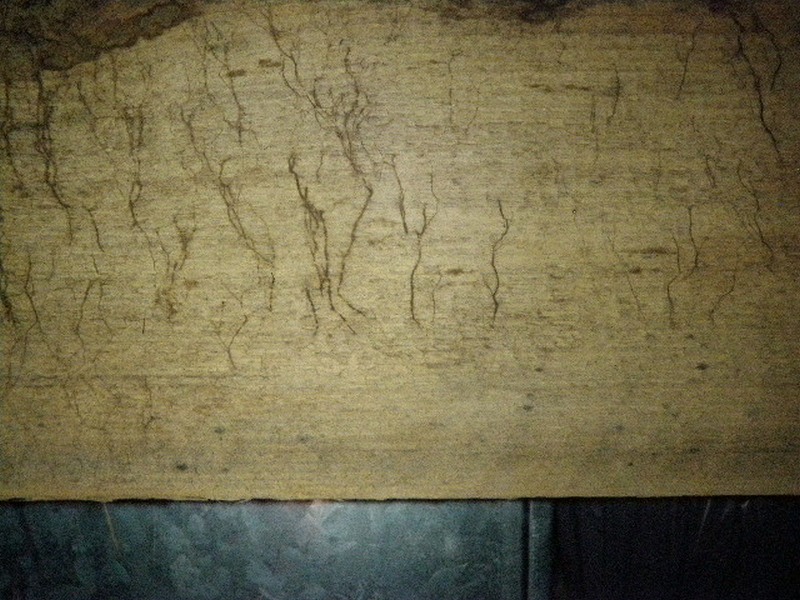
There is evidence of possible wood-destroying organism activity. Molds and fungi are usually the result of chronic excess humidity. The extent of the activity or any damage present is not determined during a home inspection. Hire an environmental specialist for further evaluation and required action. Treatment alone will likely not be adequate to prevent a recurrence. The underlying conditions must be addressed.
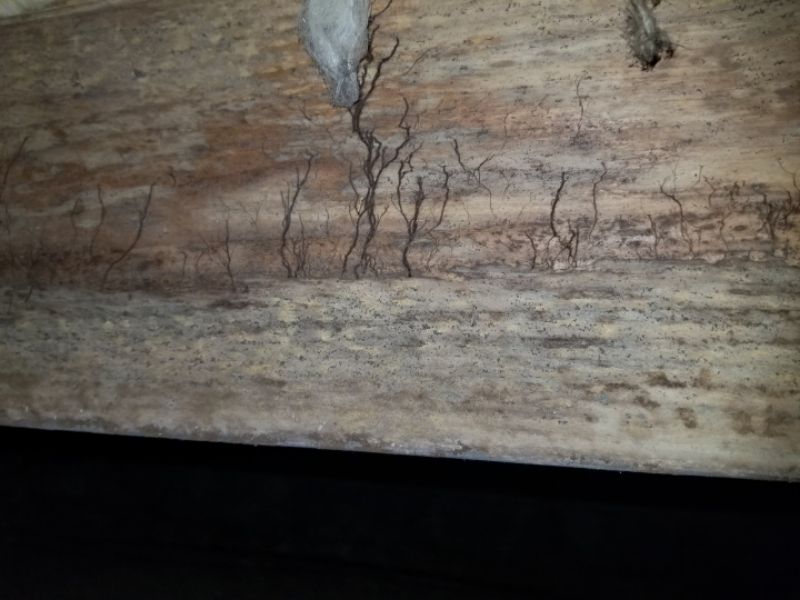
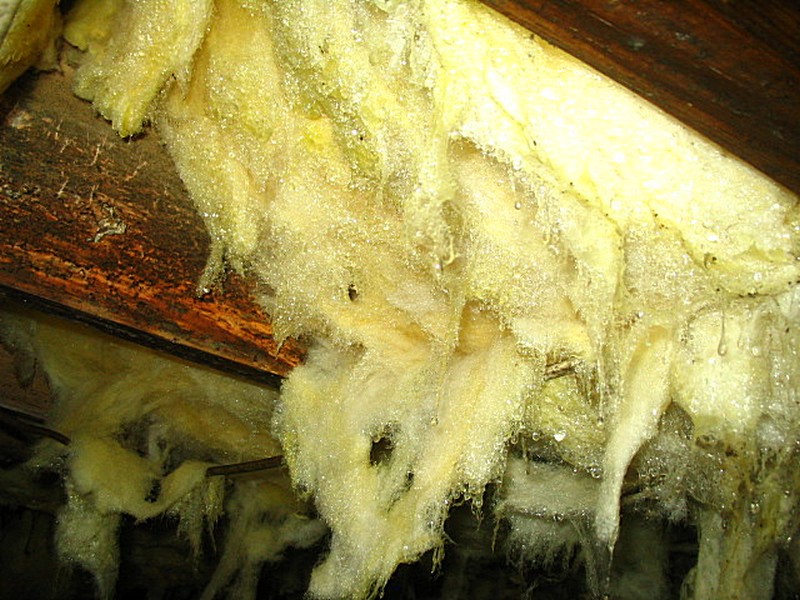
There is evidence of possible wood-destroying organism activity and damage. Molds and fungi are usually the result of chronic excess humidity. The extent of the activity or any damage present is not determined during a home inspection. Hire an environmental specialist for further evaluation and required action. Treatment alone will likely not be adequate to prevent a recurrence. The underlying conditions must be addressed.
